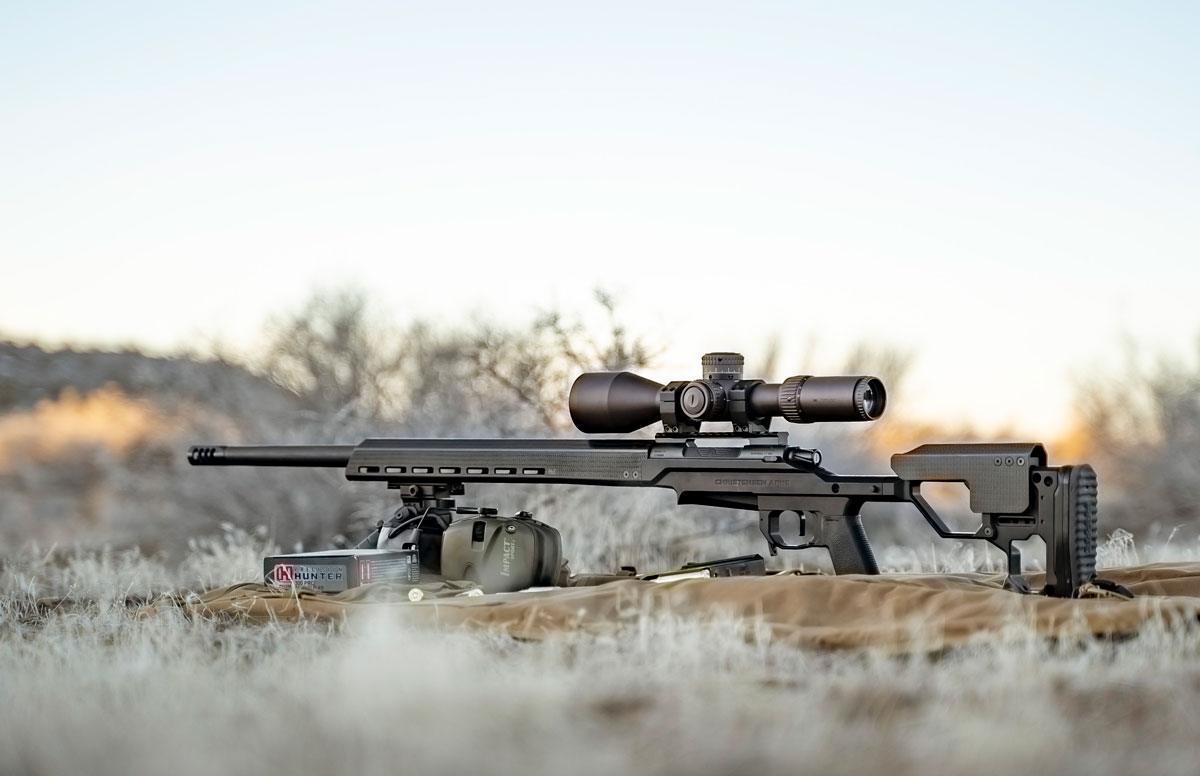Most long range shooters don't use 'hold-overs' to shoot. We typically don't sight our guns for 2 inches high and 100 yards and then hold high to make the shot. We most frequently zero the scope at 100 yards and then create a ballistics chart to use when shooting.
To begin making a ballistics chart for your rifle you'll either need to consult a ballistics program or table. You'll need to know the speed of the bullet from YOUR gun. You'll need to know some particulars about the bullet, the Ballistic Coefficient (BC).
Begin by zeroing the rifle at 100 yards, this should be Point Of Aim (POA) to Point Of Impact (POI). Consult the ballistics chart for the 200 yard drop info. If the bullet drops 4 inches at 200 yards with a 100 yard zero you need to move the scope's crosshairs up 2 MOA to get the bullet's trajectory to cross the 200 yard line at the center of the target.
This is determined in this manner, the scope is 'dead-on' at 100 yards and the bullet drops 4 inches at 200 yards. We need
to adjust the scope so the bullet has an additional 4 inches of ballistic arc at 200 yards. Because the sight mechanism on a rifle is an angular system we need to convert to an angular measurement. We use Minute Of Angle (MOA) as the system of measurement for sight adjustments. To convert 4 inches drop at 200 yards to MOA we must divide the inches of drop by the distance in hundreds of yards. It looks like this:
4 inches / 2 hundred yards = 2 MOA.
We must come up on the scope adjustment by 2 MOA ( 1 MOA is actually 1.047 inches but for this example we'll use 1.0)
We now have the come-up data for the 200 yard shot and we can proceed to the 300 yard data.
We've covered this once and it's the same thing for ALL distances. Find the bullet drop for 300 yards with a 100 yard zero... we'll call it 15 inches. Divide the inches of drop by the hundreds of yards;
15 inches / 3 hundred yards = 5 MOA of drop.
The come-up data for 300 yards is 5 MOA over the 100 yard data. (But it's only 3 MOA over the 200 yard data.)
Now we'll do the 400 yard data... call the total drop 34 inches with a 100 yard zero.
34 inches / 4 hundred yards = 8.5 MOA over the 100 yards data.
Last one for this example. 500 yards data is 60 inches of drop with a 100 yard zero.
60 inches / 5 hundred yards = 12 MOA over the 100 yard data.
So, to adjust our theoretical rifle to make a Point Of Aim to Point Of Impact hit at 500 yards we adjust the scope UP by 12 MOA from our 100 yard zero. 12 MOA would equal 48 'clicks' on a .25 MOA (1/4 inch) adjustment scope. Hold straight on the target and press the trigger for a 500 yard hit.
To begin making a ballistics chart for your rifle you'll either need to consult a ballistics program or table. You'll need to know the speed of the bullet from YOUR gun. You'll need to know some particulars about the bullet, the Ballistic Coefficient (BC).
Begin by zeroing the rifle at 100 yards, this should be Point Of Aim (POA) to Point Of Impact (POI). Consult the ballistics chart for the 200 yard drop info. If the bullet drops 4 inches at 200 yards with a 100 yard zero you need to move the scope's crosshairs up 2 MOA to get the bullet's trajectory to cross the 200 yard line at the center of the target.
This is determined in this manner, the scope is 'dead-on' at 100 yards and the bullet drops 4 inches at 200 yards. We need
to adjust the scope so the bullet has an additional 4 inches of ballistic arc at 200 yards. Because the sight mechanism on a rifle is an angular system we need to convert to an angular measurement. We use Minute Of Angle (MOA) as the system of measurement for sight adjustments. To convert 4 inches drop at 200 yards to MOA we must divide the inches of drop by the distance in hundreds of yards. It looks like this:
4 inches / 2 hundred yards = 2 MOA.
We must come up on the scope adjustment by 2 MOA ( 1 MOA is actually 1.047 inches but for this example we'll use 1.0)
We now have the come-up data for the 200 yard shot and we can proceed to the 300 yard data.
We've covered this once and it's the same thing for ALL distances. Find the bullet drop for 300 yards with a 100 yard zero... we'll call it 15 inches. Divide the inches of drop by the hundreds of yards;
15 inches / 3 hundred yards = 5 MOA of drop.
The come-up data for 300 yards is 5 MOA over the 100 yard data. (But it's only 3 MOA over the 200 yard data.)
Now we'll do the 400 yard data... call the total drop 34 inches with a 100 yard zero.
34 inches / 4 hundred yards = 8.5 MOA over the 100 yards data.
Last one for this example. 500 yards data is 60 inches of drop with a 100 yard zero.
60 inches / 5 hundred yards = 12 MOA over the 100 yard data.
So, to adjust our theoretical rifle to make a Point Of Aim to Point Of Impact hit at 500 yards we adjust the scope UP by 12 MOA from our 100 yard zero. 12 MOA would equal 48 'clicks' on a .25 MOA (1/4 inch) adjustment scope. Hold straight on the target and press the trigger for a 500 yard hit.


